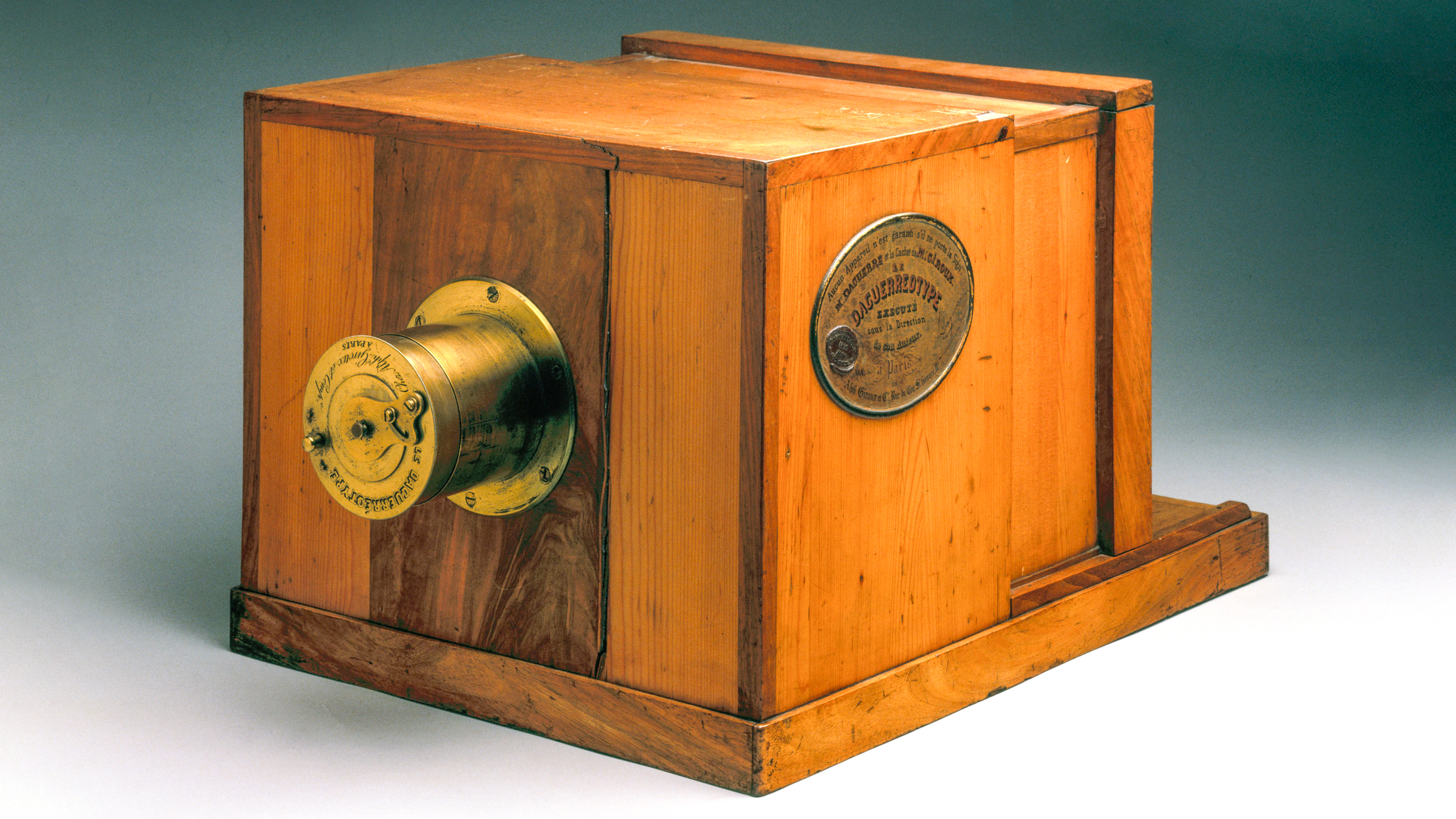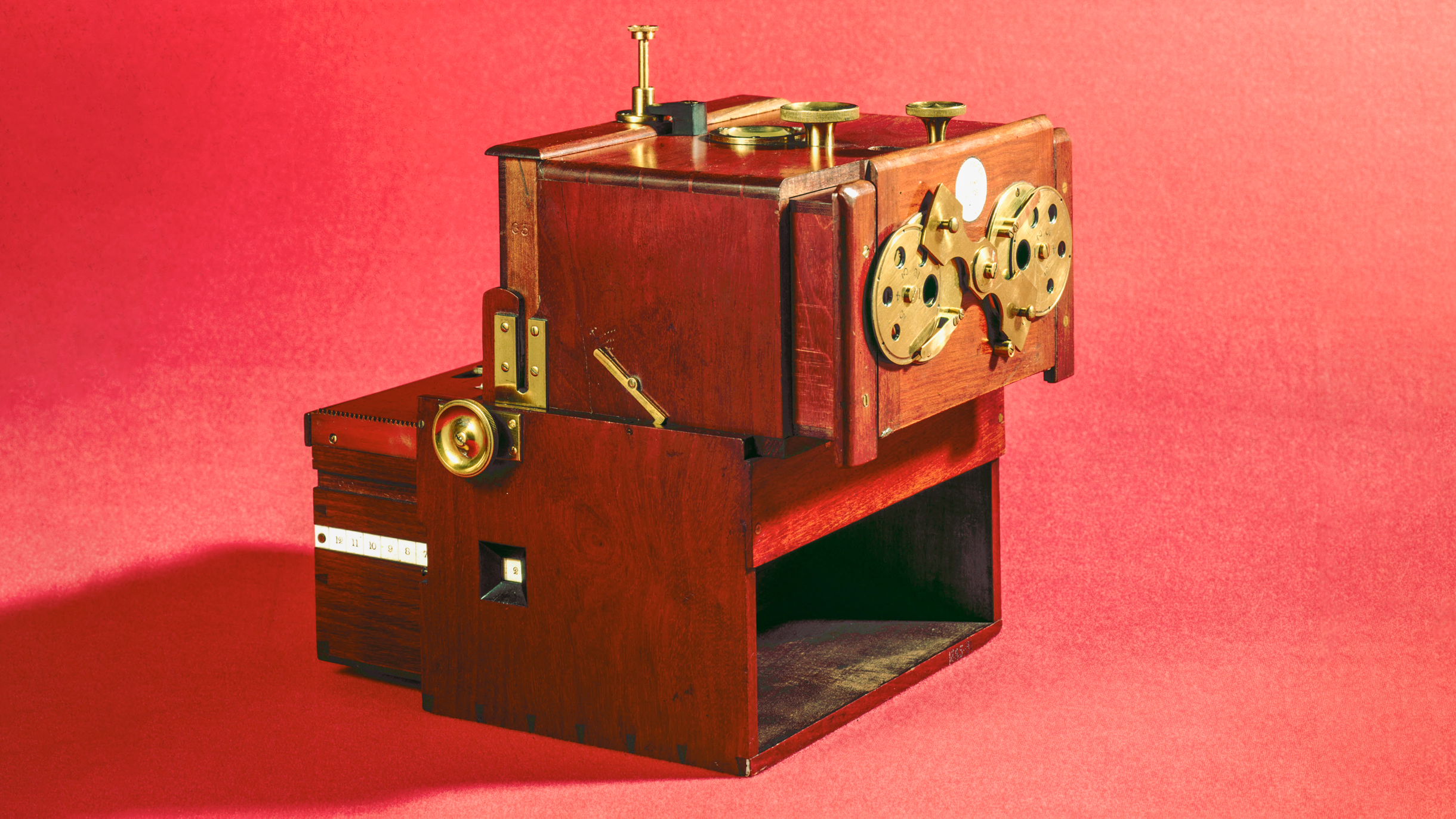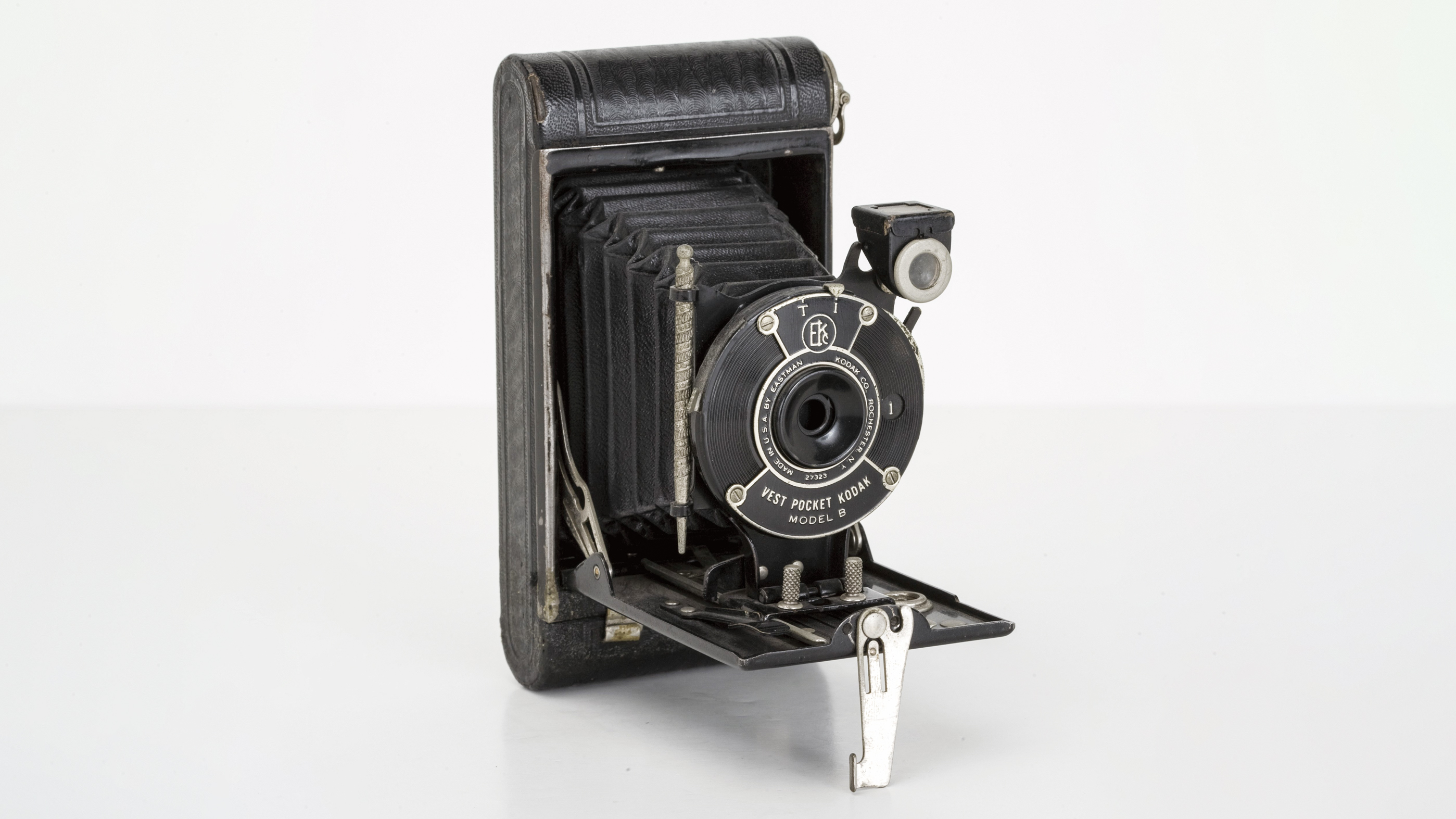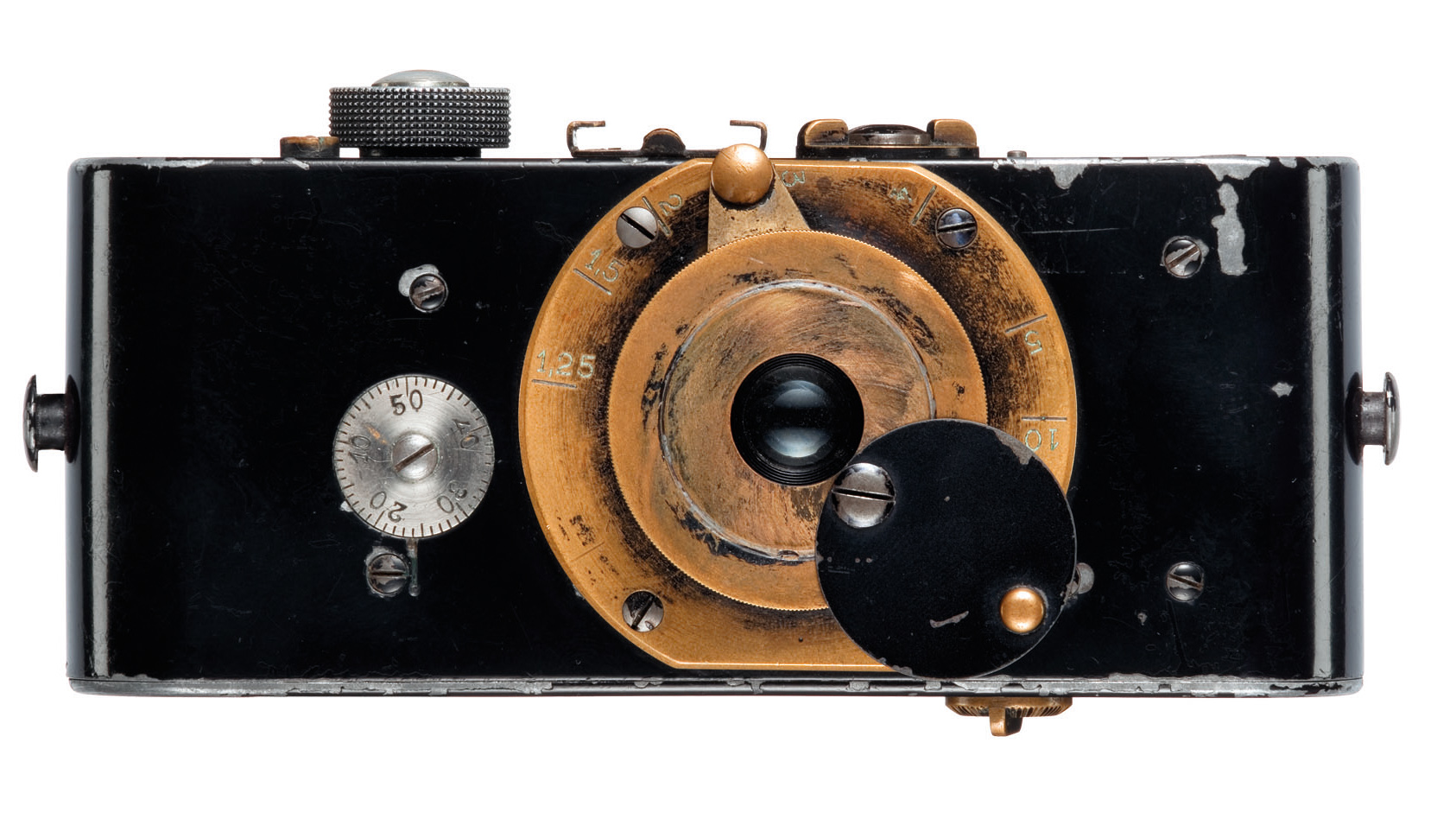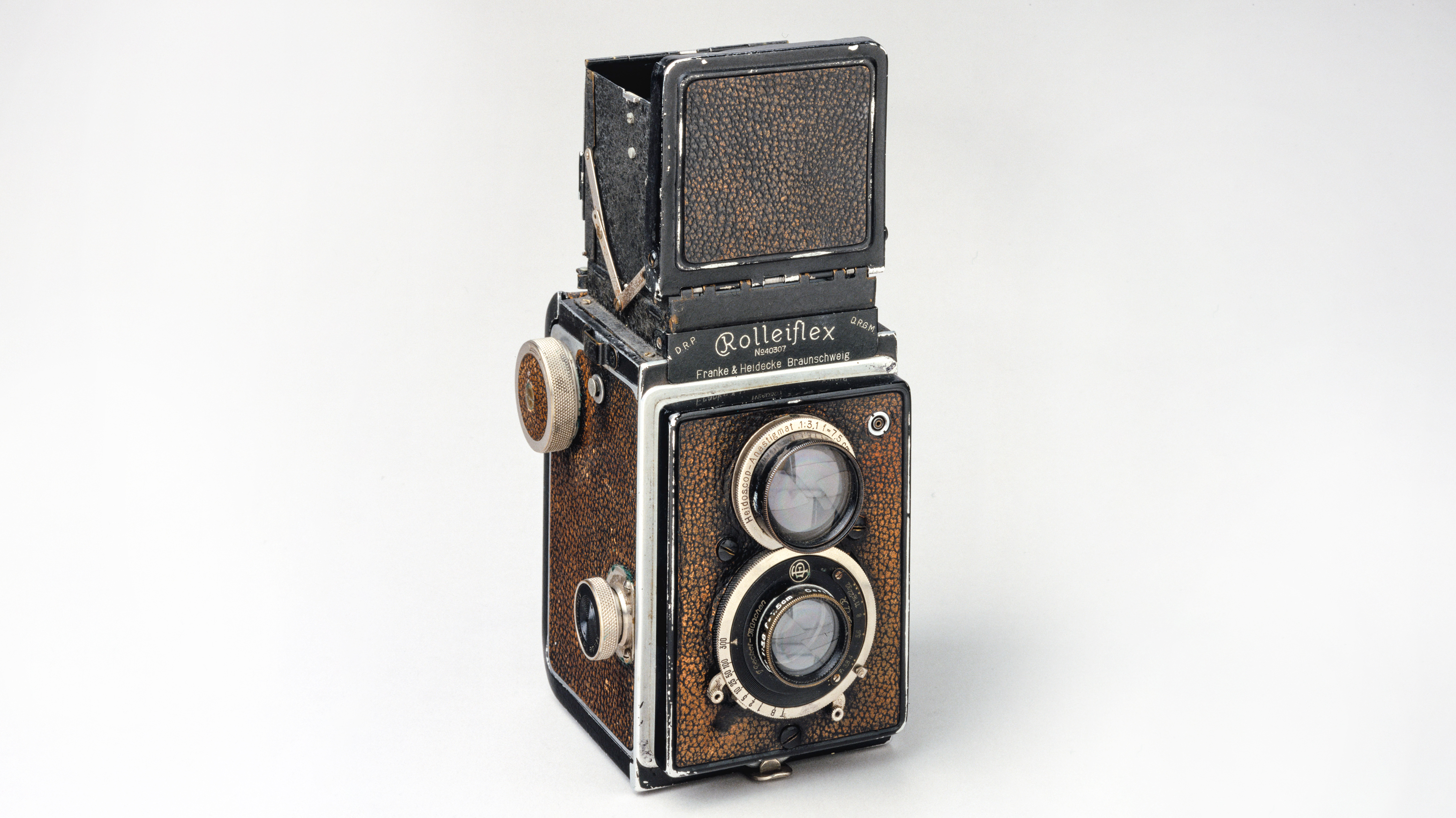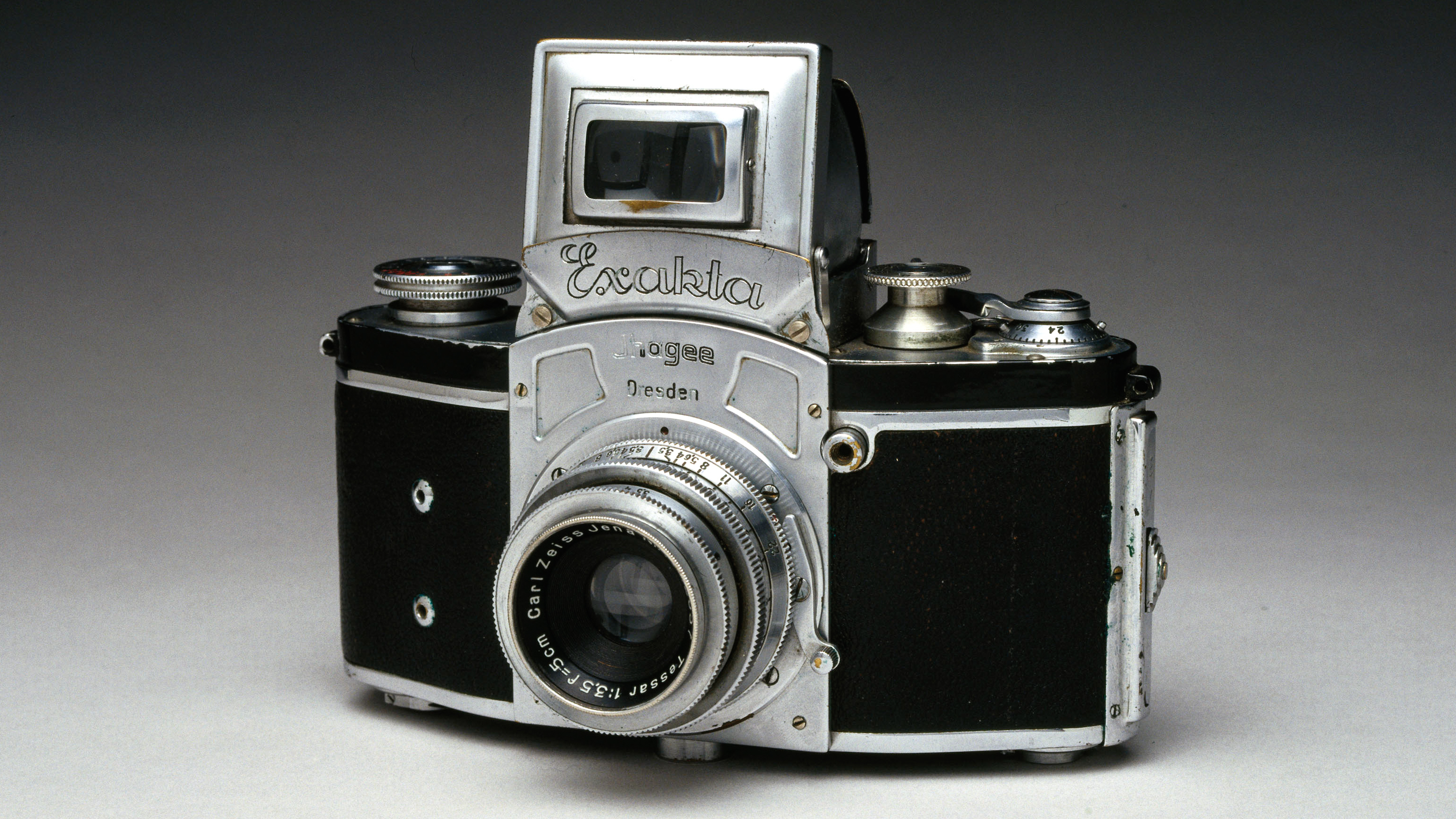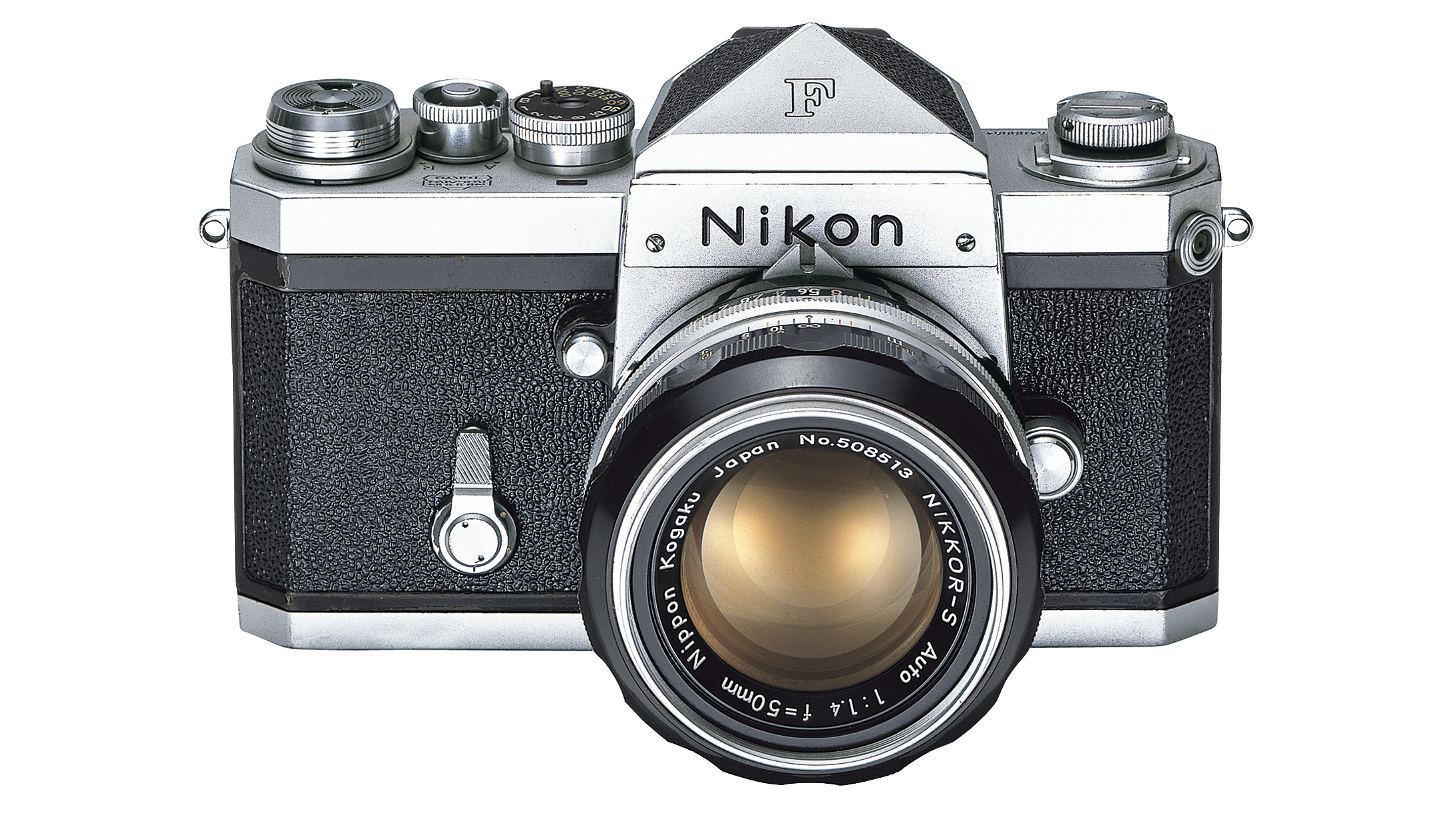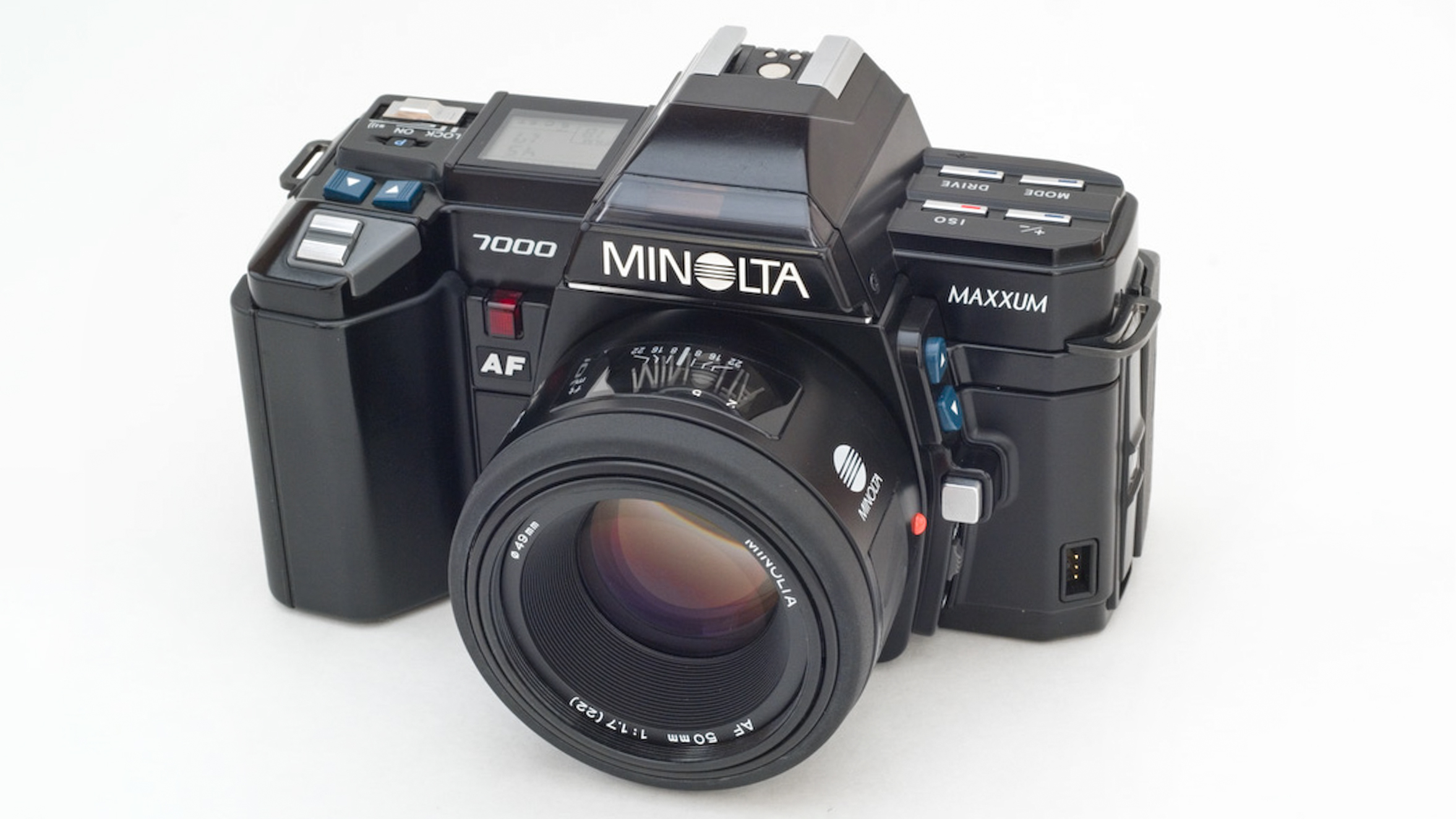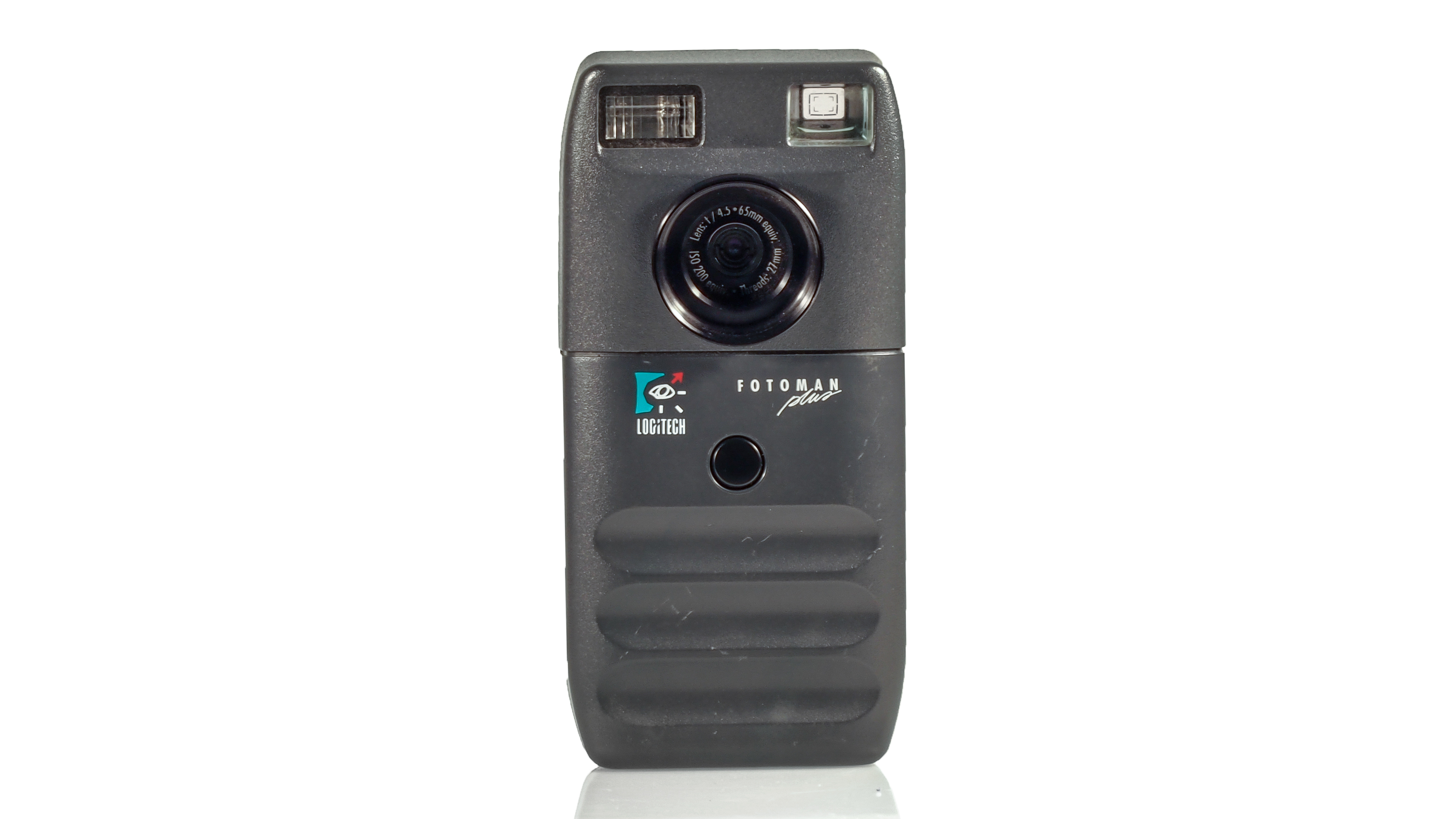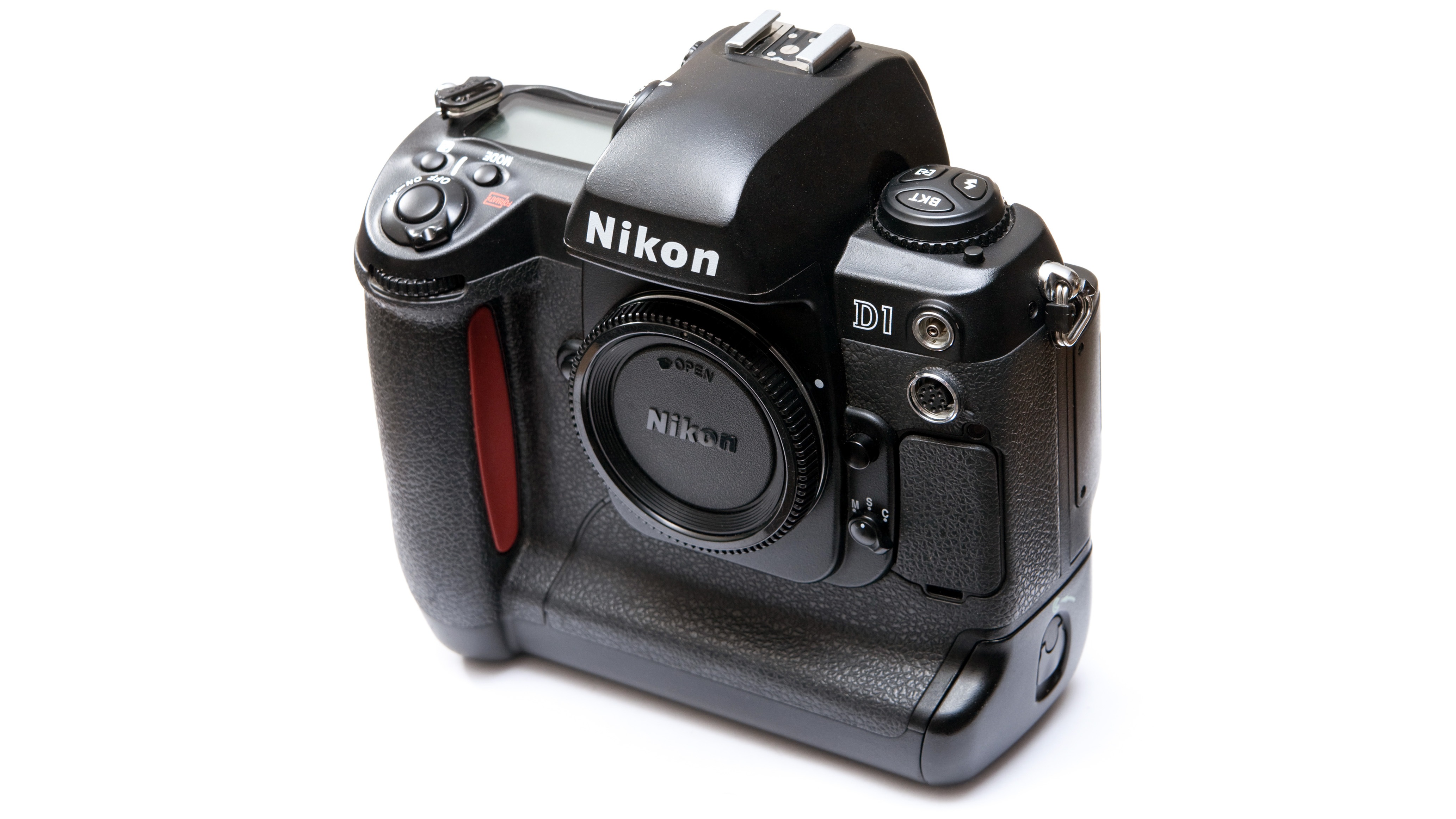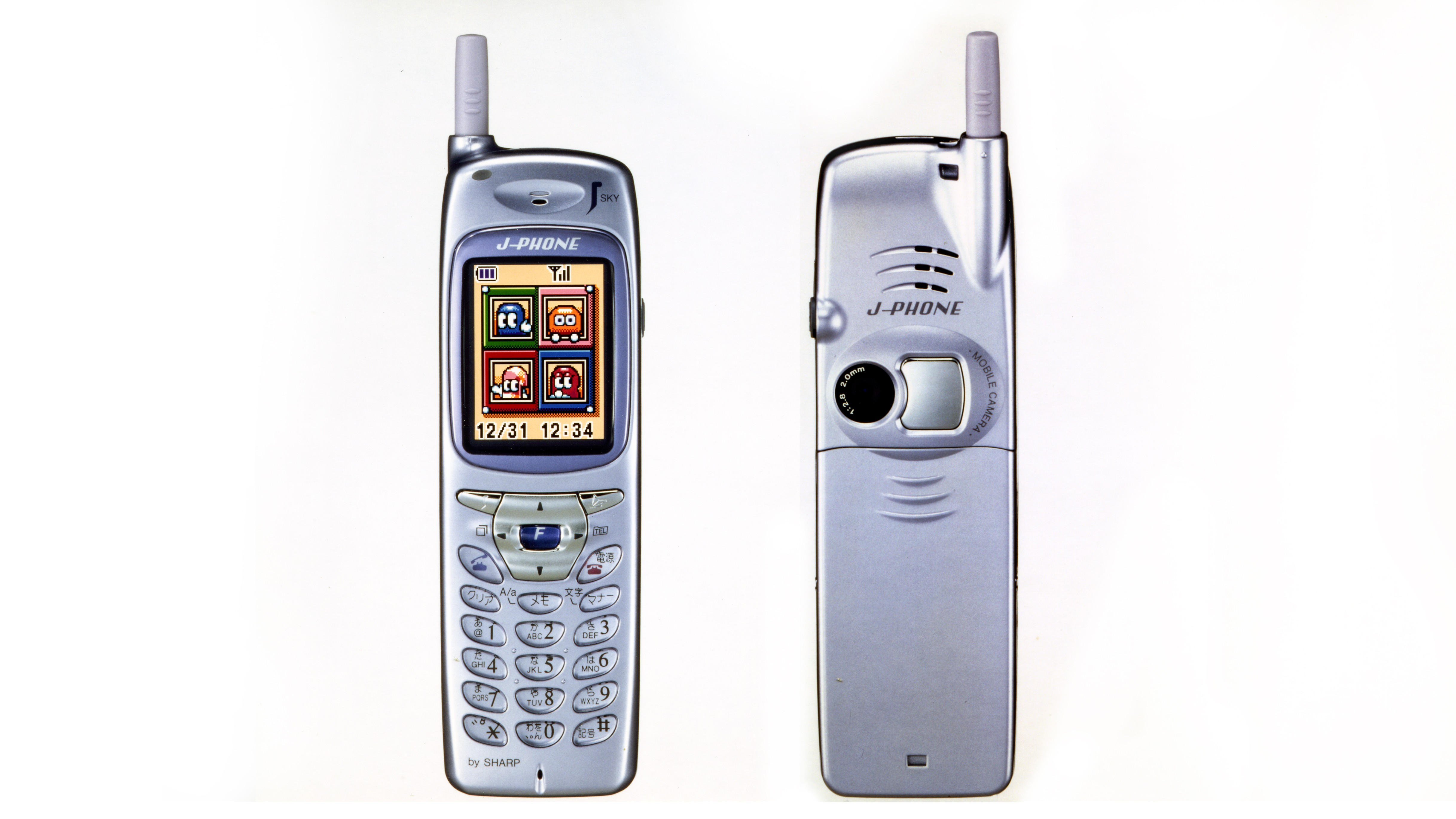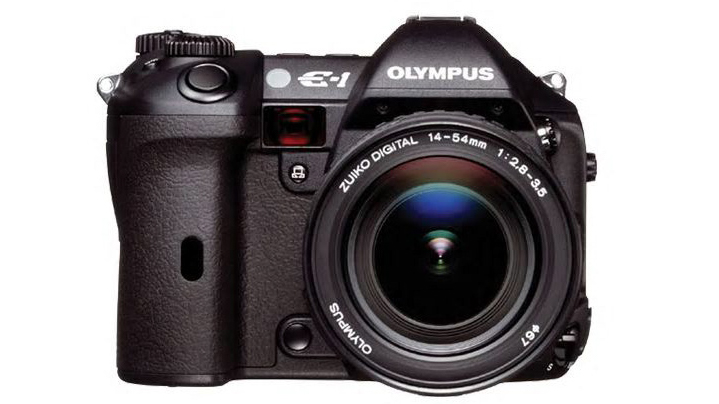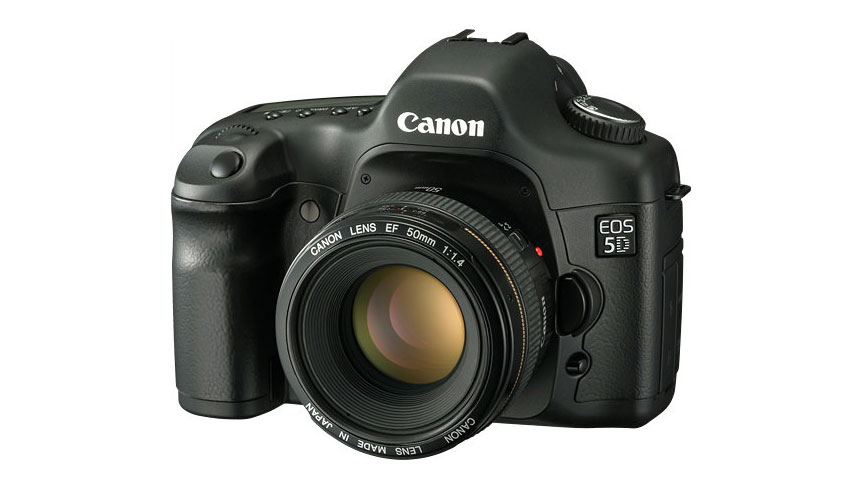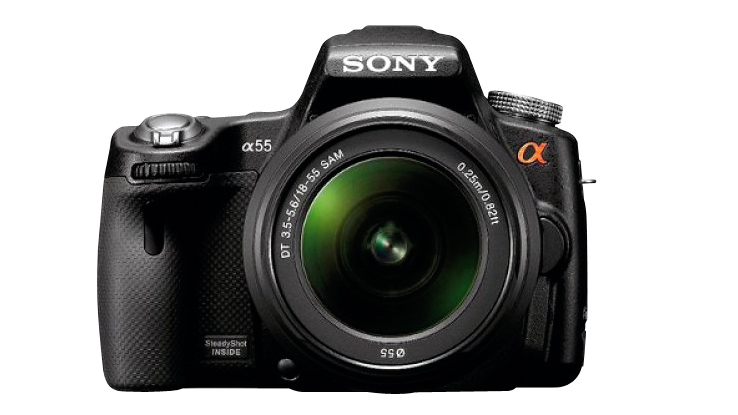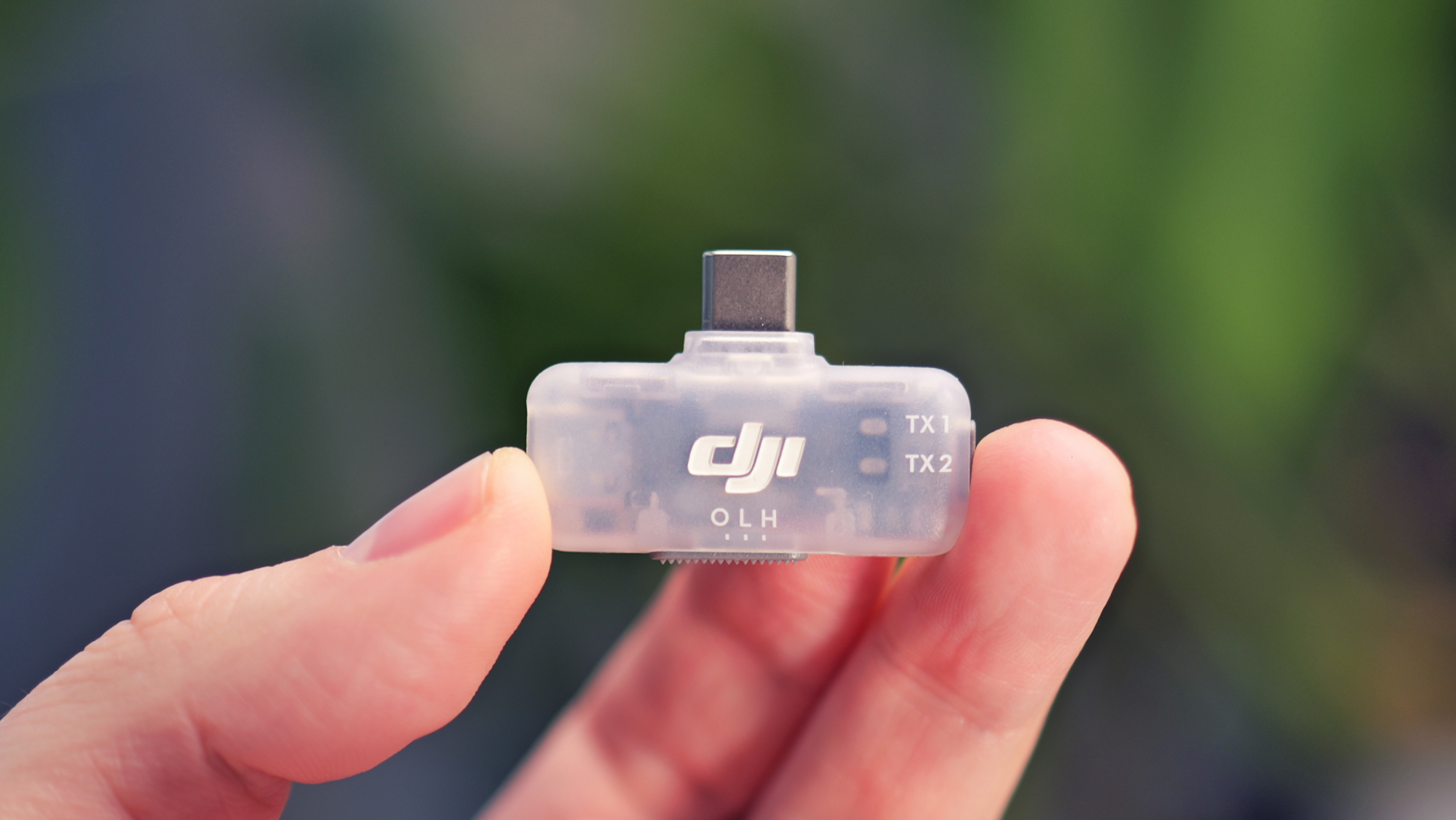30 cameras that changed the world of photography
For World Photography Day, we pick out the most significant cameras from the first 200 years of photography

To mark World Photography Day, we have been looking through the history of image making to pick out some of the most ground-breaking cameras that have been brought out over the first 200 years of photography.
Our list starts with the camera obscura - an ancient artist's tool which was used by Frenchman Joseph Niepce to take what is the oldest photograph known, and proceeds with the first commercially-successful camera developed by Louis Daguerre. We move through the rise of Kodak, Leica, Nikon and more - and right through to the early success in digital cameras…

1: The Camera Obscura, 1826
● The camera obscura was the basis instrument that Joseph Niépce used to take the first ever photograph. It’s a light-tight box or a darkened room with a small hole in one side which lets in light from outside. As light travels in straight lines, images from outside are projected, upside-down, onto the surface directly opposite.
● It was first used in 400BC by the Chinese philosopher Mozi and was later used by Aristotle in Ancient Greece. Early lenses were used from the 16th century to give a sharper and more detailed image.
● Other than tracing the outlines of camera obscura images by hand, it was impossible to make these images in any way permanent - until Niépce’s invention.
2: The Daguerre-Giroux camera, 1839
● This was the first commercially available camera, based on Louis Daguerre’s original. Daguerre granted his relative, Alphonse Giroux, the right to make and sell them.
● The lens was made by optician Charles Chevalier. It was originally designed for microscopes and had an aperture of f/15.
The best camera deals, reviews, product advice, and unmissable photography news, direct to your inbox!
● The camera had a ‘double-box’ design. The image was sharpened on the rear focusing screen by sliding the smaller box inside the main box.
3: Dubroni wet-plate camera, 1864
● The Dubroni camera, introduced a year before the end of the American Civil War, was the next step forward in wet-plate camera design. It was patented by Jules Bourdin (1832-93) and the brand name was an anagram of his surname.
● It ingeniously did away with much of the early wet-plate equipment by enabling the photographer to sensitize, expose, develop and fix the glass plates within the camera body.
● The camera made the wet-plate process much more convenient to use and was particularly popular in Europe.
4: The Stereoscopic Camera
● In 1853, the first stereoscopic camera was made for sale. It was called the Dancer and was made by English optician and instrument maker John Benjamin Dancer. He perfected it in 1856 (shown here).
● Dancer’s design was a double-lensed ‘binocular’ model. It used one camera which was moved by the photographer to shoot two separate exposures through the different lenses. It produced 3 ¼-inch square images.
● Other early stereoscopic cameras used two cameras side by side and numerous designs were made. However, the large-scale production of stereo cameras didn’t begin until after 1900.
5: The first Kodak camera, 1888
● Eastman’s revolutionary camera was the first specifically designed for roll film. It had a simple box design and weighed around 900g. The shutter was set by pulling a string, then fired by pressing a button on the side. Film was wound on with the key on the top of the camera.
● The camera was sold with a 20-foot paper negative roll already loaded inside - enough to take 100 photographs. When the film ran out, you simply posted the camera back to the Kodak factory for processing. The prints, negatives and camera containing another pre-loaded replacement film were returned by post.
● The camera had a fixed-focus lens and produced circular negatives 6.5cm in diameter. It was succeeded by the Kodak No. 1 camera in 1889, which had an improved shutter, and eventually a range of innovative camera designs.
6: Graflex Speed Graphic, 1912
● The Speed Graphic is a folding camera which was used for decades by press photographers. It had a cloth focal plane shutter which could freeze action using shutter speeds up to 1/1000sec. It exposed different parts of the negative at different times through a narrow slit in the fabric.
● The first ‘Speed Graphic’ camera, the ‘Top Handle’, was made in 1912 by Graflex in New York. It was a medium-format camera which could produce negatives up to 5x4in. This early model had a small lensboard and couldn’t accommodate longer lenses.
● Although shutter speeds were fast, on early models each sheet of film had to be loaded and shot separately, so photographers had to carefully choose the right moment to shoot. The ‘Top Handle’ was produced until 1927. Succeeding Speed Graphic models of various sizes were made until the 1970s.
7: Kodak ‘Vest Pocket’ camera, 1912
● The Kodak ‘Vest Pocket’ (or VPK) was a popular ‘compact’ camera which, as the name suggests, was small enough to fit in a vest (waistcoat) pocket. It measured 4 ¾ x 2 ½ inches when closed and produced 2 ½ x 1 ⅝, inch negatives. It cost £1.10s (approx. £90 in today’s money).
● At the outbreak of World War I, the VPK was advertised as ‘The Soldier’s Kodak’ and men joining the Forces bought the camera to record their experiences. In Britain, 5,500 VPKs were sold in 1914, but by 1915 sales were up to 28,000.
● An ‘Autographic’ VPK was introduced in 1915. It had a small flap in the back which allowed photographers to write information directly on the margin between negatives with a stylus. This writing would appear on the edge of the finished prints.
8: ur-Leica (1913)
● The first prototype Leica was initially intended for gauging exposures in cine photography, but it sparked an idea for creating a small camera for still photography.
● It was designed in 1913 by the German optical engineer and industrial designer Oskar Barnack (1879-1936), who was the head of development at the Leitz camera company. The camera used sprocketed 36 x 24mm movie film.
● This early version had a focal plane shutter and a lens in a collapsible mount. However, it would take many years of development before the revolutionary Leica 35mm camera was launched and began a new age in photography.
9: Leica 1 Model A, 1925
● The Leica 1 popularized the 35mm format in still cameras, which was already the standard film size for movies. It produced 24x36mm negatives on perforated film. It was the first high-quality small hand-held camera and it revolutionized both camera manufacture and photography itself.
● Oskar Barnack’s design was simple to use, compact, lightweight and expertly engineered. It had a high quality, collapsible, non-interchangeable 50mm f/3.5 lens, specially designed for the camera by Max Berek, and a focal plane shutter offering speeds of 1/25sec to 1/500sec. It had an attachable vertical rangefinder.
● Introduced at the Leipzig Spring Fair in 1925, it was an expensive camera and went on sale at a time of economic hardship. Even so, the Leica 1 was soon established as the market leader and went on to inspire countless more 35mm cameras.
10: Rolleiflex I, 1929
● The Rolleiflex was the first modern twin-lens reflex camera, producing a 6cm x 6cm negative on 117 (later 120) rollfilm. It was engineered to the highest standards, had premium-quality Carl Zeiss optics and is now acknowledged as a design classic.
● The original Rolleiflex TLR first went on sale in 1929, after three years’ development by Rollei. The company had been founded in 1920 by two Germans, businessman Paul Franke and camera designer Reinhold Heidecke.
● As a compact, high-quality, easy-to-operate medium-format camera, it was immediately successful. It became the camera of choice for professional in all fields as well as serious amateurs. A succession of improved models, based on the original design, followed until the 1990s.
11: Kine Exacta,1936
● The Kine Exacta was the world’s first 35mm SLR camera and offered a combination of features for the first time that were to become standard on later SLRs. It had a compact, lightweight aluminum alloy body, interchangeable lenses, a focal plane shutter and also offered 20 shutter speeds from 12 seconds to 1/1000sec.
●The camera was designed by engineer Karl Nüchterlein and made by the Dresden-based manufacturer Ihagee Kamerawerk Steenbergen & Co. The Kine Exacta succeeded the earlier Vest Pocket Exacta (1933), which had been the first SLR to use 127 roll film.
● The camera’s production was seriously disrupted by the war and the Ihagee factory was destroyed during the bombing of Dresden in 1945. The company was later taken over by East German company Pentacon, which produced further Exacta models.
12: Argus C3, 1939
● The Argus C3 is significant for its sheer popularity, bringing photography to an ever wider audience. Nicknamed ‘the brick’ for obvious reasons, was an affordable 35mm rangefinder that went on sale in 1939. It was one of the best-selling cameras ever made, selling a colossal two million units.
● The Argus company was founded in Ann Arbor, Michigan, USA, in 1936. It produced numerous cameras including ‘A’, ‘C’ and ‘Argoflex’ ranges, but the C3 was its runaway success and remained in production for 27 years. It was competitively priced at around one-sixth of the cost of a Leica.
● The C3 took interchangeable lenses and had a flash contact. The prominent dials and other features on the Bakelite-and-metal body made it look more like a scientific instrument than a camera. The C3 was famously used by American photojournalist Tony Vaccaro, both during and after World War II.
13: Contax S, 1949
● The Contax S was the first SLR camera in which an unreversed image was seen through a built-in eye-level pentaprism viewfinder – an innovation soon widely adopted.
● It was first planned by East German company Zeiss Ikon in the late 1930s, but development was delayed because the Dresden factory was used to make gunsights and other optical equipment for the German military during World War II.
● The camera, as designed by Wilhelm Winzenberg, finally went on sale in 1949.The ‘S’ stood for Spiegelflex, which was German for ‘mirror reflex’. The camera had a 42mm screw mount which subsequently became an industry standard size.
14: Nikon F, 1959
● The Nikon F, which went on sale in 1959, was the company’s first SLR. Its arrival marked the beginning of a long-running series of market-leading professional SLR cameras and a turning point in 35mm photography.
● This tough, dependable camera brought together a range of state-of-the-art features: full-frame viewfinder, instant return mirror, bayonet lens mount, automatic lens diaphragm, interchangeable viewfinders and focusing screens and interchangeable lenses from wideangle to telephoto. You could also attach a super-fast 4fps motordrive.
● The camera was produced until 1974. Its success and wide adoption by professionals established Nikon as a major player. It also signalled the arrival of Japanese companies as makers of top quality, market-leading equipment.
15: Kodak Instamatic, 1963
● The first model in the phenomenally-successful Kodak Instamatic series, the Instamatic 50, first went on sale in 1963. It used the easy-load Kodak 126 format cartridge film, which produced 28mm x 28mm negatives.
● This inexpensive, point-and-shoot camera was a ‘Brownie’ for the modern age. It was light, small and had a fixed lens and two possible shutter speeds: ‘sunny’ (1/90sec) and ‘cloudy/flash’ (1/40sec). This model was followed shortly afterwards by the Instamatic 100.
● Over 50 million Instamatics were made from 1963-70. Dozens more Instamatic models were produced, including the Pocket Instamatic in 1972, which used the much smaller 110 format film cartridges. The last Kodak Instamatic, the X-15F, was on sale in the US until 1988.
16: Polaroid Model 20 ‘Swinger’, 1965
● The Polaroid Model 20 ‘Swinger’, launched in 1965, was a basic, affordable, easy-to-use camera with a space-age design. It had mass-market appeal and, helped by a TV advertising campaign with the song ‘Meet the Swinger’ (sung by Barry Manilow), sold 4 million units in two years.
● The camera was called the ‘Model 20’ because the company aimed for a selling price of around $20 (it went on sale priced $19.95). It had a fixed lens and a fixed shutter speed (1/200sec). Other features were an AG-1 flash socket and a telescopic viewfinder.
● The distinctive red aperture control on the front of the camera was adjusted until the word ‘YES’, showing in the viewfinder, signalled the correct exposure. It used fast roll film which had to be pulled out of the camera to be developed; its black & white pictures developed in ten seconds.
17: Prototype Digital Camera, 1975
● Steven Sasson laid the foundations for a complete revolution in camera technology when he built the first digital still camera in 1975, at the Apparatus Division research lab at the Eastman Kodak Company in Rochester, New York. It recorded black & white images on a digital cassette tape with a 0.01 megapixel resolution and weighed a hefty 6.3kg, and took advantage the newly-invented charged coupled imaging device (CCD)..
● Images were played back on a conventional black & white TV set. Steven Sasson’s prototype digital camera took 23 seconds to write a single image to a cassette. It would take until 1991 before the first digital SLR was commercially available. Sasson’s camera remained a Kodak secret until 2001. Sasson was awarded the National Medal of Technology and Innovation by President Obama in 2009.
18: Minolta Maxxum 7000, 1985
● The Maxxum 7000 (the Dynax 7000 in Europe) broke new ground by becoming the first camera to have an integrated autofocus and motor winder. The camera popularised AF with consumers and spearheaded a new generation of cameras.
● Nikon, Canon and Pentax had produced autofocus models, but their AF lenses were self-contained and used the same mounts as manually-focused lenses. The 7000 and had a new purpose-built lens mount as well as computer chips in the body, lenses and accessories.
● Minolta autofocus cameras were affordable to non-professionals and dominated the market for two years. Soon cameras with AF sensors and focusing drive inside the body became the norm.
19: Canon EOS 650, 1987
● Launched after two years’ research and development, the EOS 650 was the first in the new EOS (Electro-Optical System) autofocus SLR series. It marked both Canon’s 50th anniversary as a camera manufacturer and a new era for the company, setting the pace for its competitors.
● The EOS 650 had a focal plane electronic shutter and the new, extra-sensitive AF sensor, BASIS (Base-Stored Image Sensor). The system featured the new electronic EF (Elecro-Focus) lens mount, which replaced the manual-focus FD lens mount.
● The fast-focusing EF lenses were the first to have dedicated a USM (Ultrasonic Motor) built into the lens for focusing, and all contact between lens and camera body was electrical, making it a significant advance on previous models.
20: Dycam Model 1
● The Dycam Model 1 was the first portable, commercially-available digital camera and went on sale in November 1990. The camera used a CCD image sensor and had a resolution of 320x240, which translates as roughly 0.09MP. The images were recorded in black & white.
● The ultra-simple design featured just one button, the shutter release, which was on the front of the camera. It had an optical viewfinder and a built-in flash, but the flash had to be activated by being plugged in to a computer and activated via the camera’s software. It offered shutter speeds from 1/30sec to 1/1000sec and could store up to 32 images.
● The camera, sold in the USA, cost almost $1000. The high cost and poor image quality lead to its commercial failure. It was later marketed more successfully as the Logitech Fotoman (pictured above). Despite its early limitations, the digital camera had arrived.
21: Kodak DCS-100, 1991
● The Kodak DCS (later called the DCS-100), launched in 1991, was the first digital SLR camera. It was aimed at the professional market and was the first in a long line of Digital Camera System models, which continued until 2004.
●The kit consisted of a Nikon F3 film camera with a motor winder fitted to the base and a camera back with a CCD image sensor. The winder was connected by cable to a Digital Storage Unit. The DSU, carried on the photographer’s shoulder, housed the hard drive which could store up to 156 uncompressed images. It also held a small image-viewing monitor and the batteries.
●By later standards it was heavy, cumbersome and expensive: the entire kit weighed around 7kg and cost up to $25,000. Yet features such as the 1.3megapixel image size and the almost instantaneous shutter release were ahead of their time.
22: Nikon D1, 1999
●The Nikon D1 was an important step forward for digital cameras as it was the first purpose-made DSLR produced by one of the major manufacturers, though leaned heavily on the Nikon F5 for inspiration. Previous models had been film cameras supplemented with a digital back and a separate unit for power supply and image processing and storage.
●The professional-grade D1 offered a 2.74 megapixel image sensor, a 2-inch LCD screen and 4.5FPS continuous shooting. It also offered ISO settings from 200-1600 and shutter speeds up to 1/16,000sec and was the first DSLR to shoot JPEGs. Another bonus for Nikon users was that it accepted all the Nikon F-mount lenses.
●It was bulky and weighed 1.1kg without lens or battery. However, the D1’s nearest rival, the 2-megapixel Kodak DCS-620 (itself based around a Nikon F5) was bigger, heavier, had a smaller sensor and was around double the price. In launching the D1, Nikon ended Kodak’s dominance of the DSLR market.
23: Sharp J-SH04, 2000
• The J-SH04, made by Sharp and sold in Japan by J-Phone in November 2000, was the first commercially-available mobile phone with a camera. It could record still images (with a resolution of 0.11megapixels) and send them electronically.
• The other contender for the title ‘first cameraphone’, the Samsung SCH-V200 (released in June 2000), had to be connected to a computer for the images to be accessed.
24: Olympus E-1, 2003
●The Olympus E-1 was the first DSLR specially designed for digital imaging, rather than being based on an existing film camera. It was also the beginning of Olympus’s new E System of cameras, lenses and accessories.
●It introduced the Four Thirds imaging system and lens mount, based on an 18mm x 13.5mm sensor which was smaller than that used by other manufacturers. This enabled cameras to be made lighter and more compact than previous models.
●It had a 5-megapixel CCD made by Kodak and a robust, magnesium alloy body that was environmentally sealed. It was also the first camera to have a ‘Supersonic Wave Filter’ installed, which shook the dust from the sensor when the camera was turned on. This feature was also adopted by Panasonic and Leica.
25: Canon EOS Digital Rebel, 2003

● The EOS Digital Rebel (EOS 300D in the Europe), which went on sale in 2003, was one of the first cameras to bring digital imaging within the reach of amateur photographers. Until its arrival, DSLRs had been aimed at professionals, or those with a very large bank balance.
● It cost around US$999 / £820 with the new EF-S 18-55mm lens and offered a 6.3megapixel CMOS sensor, a 7-point TTL autofocus system and an ISO range from 100-1600. Images were viewed on a 1.8in LCD screen. The camera was also fully compatible with all Canon EF lenses.
●The 300D had a plastic body, but it shared many of the features offered by the much more expensive EOS 10D, including the same sensor. “Professional digital photography,” said the advertising slogan, “No longer just for the professionals.”
26: Canon EOS 5D, 2005
● Introduced in 2005, the EOS 5D was the first full-frame DSLR without the professional ‘double grip’ body design. Selling for a typical body-only price of around £2000, it was also significantly cheaper than Canon’s other full-frame camera, the EOS 1Ds Mark II (around £4800 body-only).
● The EOS 5D brought together a 12.8megapixel, 38.8mm x 23.9mm CMOS sensor and a 2.5 inch LCD monitor. It also had a nine-point TTL autofocus and a sensitivity range from ISO 100-1600, which could be extended to ISO 3200. It was housed in a relatively compact magnesium alloy body.
● The lower price, together with the camera’s impressive image quality and all-round performance, made it a popular choice for enthusiasts and many professionals.
27: Panasonic Lumix DMC-G1, 2008
● The G1, introduced in 2008, was a new kind of digital camera. It was the first compact system camera (CSC) that used the Micro Four Thirds (MFT) system. MFT removes the need for a pentaprism and mirror box, enabling the use of smaller lenses and lighter, more compact camera designs.
● The camera came mid-way between high-end compacts and full-sized DSLRs. It had an electronic viewfinder with a 1.4million dot resolution and a 3-inch multi-angle swing and tilt LCD monitor.
●It had an 18mm x 13.5mm, 12.1-megapixel sensor and existing four-thirds lenses could be attached using an adaptor. The G1 was the forerunner to a steady stream of MFT cameras which have since been produced by Panasonic and Olympus.
28: Sony SLT Alpha 55, 2010
● In 2010, Sony released a new interchangeable lens camera design: the single-lens translucent (SLT) camera, following its buyout of Minolta's camera business. The Alpha 55 was the first in a growing line of Sony SLTs, which replaced the DSLR’s standard flip-up mirror with a fixed, semi-transparent mirror.
● The mirror allows around 70% of the light coming through the lens to reach the sensor, while the remaining 30% is reflected on to the camera’s exposure and autofocus sensors. The optical viewfinder is replaced with a high-resolution electronic viewfinder.
● The a55 offered a 16.2 megapixel CMOS sensor, up to 10fps continuous shooting and the ability to shoot Full HD (1080p) videos. The camera was generally well-received as an innovative addition to the enthusiast market.
29: Samsung Galaxy Camera, 2012
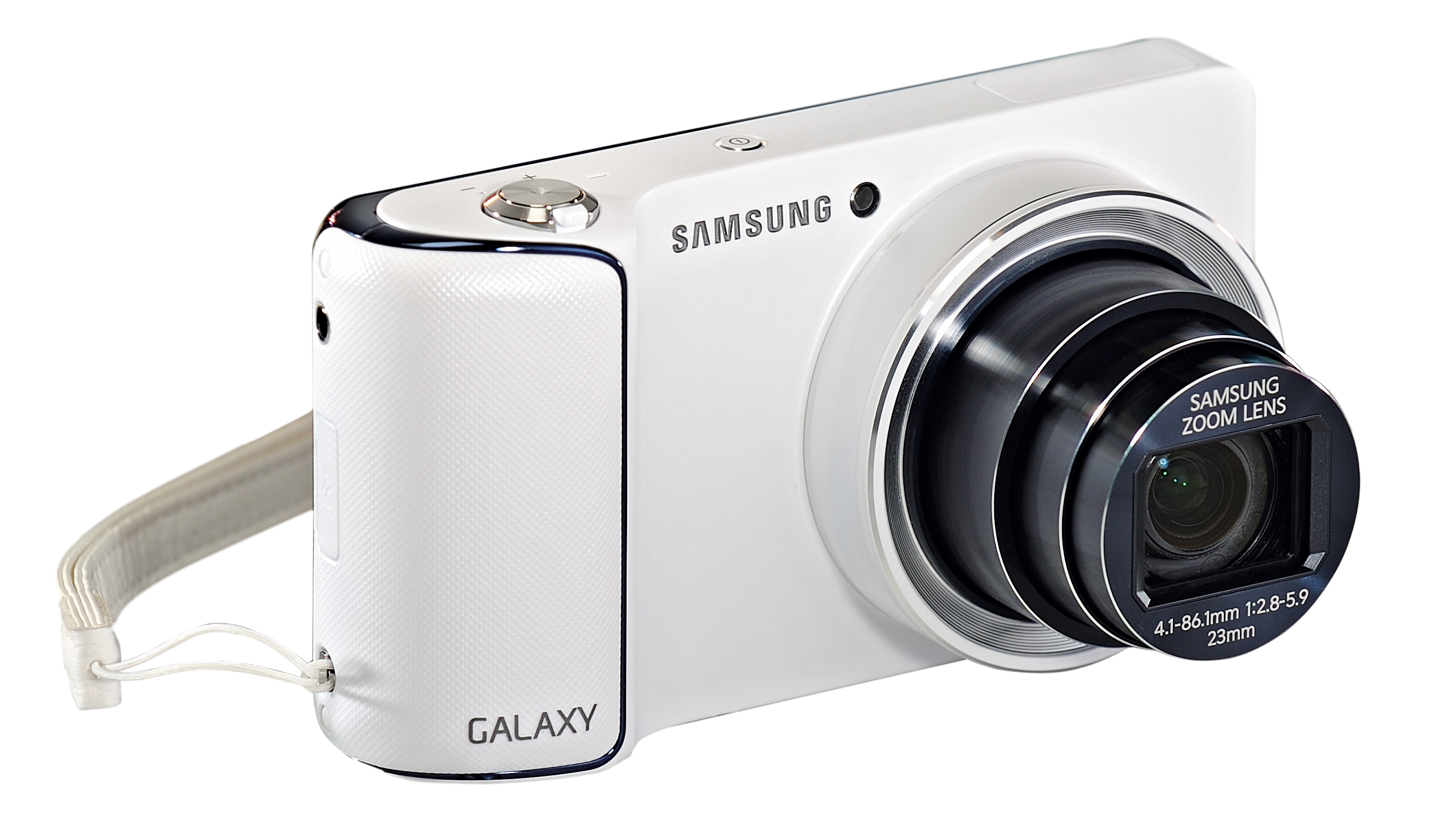
● The Samsung Galaxy Camera, which went on sale in November 2012, was the first camera with an Android-based operating system. It had a phone-shaped body and combined the features of a compact camera and a smartphone - though one thing you couldn’t do with it was make voice calls.
● The camera was equipped with a 16-megapixel sensor and its retractable lens provided a 21x optical zoom. On the reverse was a 4.8inch HD LCD screen, while inside it contained a 1.4GHz quad-core processor.
● It offered 3G and Wi-Fi connectivity, allowing pictures to be instantly shared or transferred, while the Android 4.1 Jelly Bean operating system gave access to a huge range of apps on the Google Play Store to enhance the camera’s features.
30: Sony A7 & A7R, 2013
● The Sony Alpha 7 & 7R, which both went on sale in December 2013, are the first mirrorless cameras equipped with a full-frame sensor, offering DSLR-quality images without its significantly larger size and weight.
● The two cameras are similar except in certain important details: for instance, the Alpha 7 has a 24.3 megapixel sensor and the more expensive A7R has 36.4 megapixels. Impressive features they share include a 2.4m-dot electronic viewfinder and the ability to record HD video at 1080p. Both have Sony’s new, fast Bionz X processor.
More features
100 quotes about photography by famous photographers
David Clark is a photography journalist and author, and was features writer on Amateur Photographer for nine years. He has met and interviewed many of the world's most iconic photographers and is the author of Photography in 100 Words: Exploring the Art of Photography with Fifty of its Greatest Masters.
- Chris GeorgeContent Director
